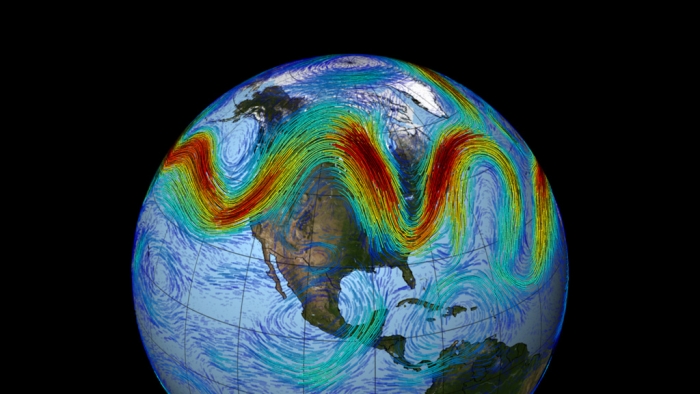By: John Walsh, President's Professor of Global Change and Chief Scientist at the International Arctic Research Center, University of Alaska Fairbanks
Several decades ago, the Arctic was an afterthought in climate change research. Today it is at the forefront. The recent acceleration of research on Arctic climate, together with widespread coverage by the media and interest by the public, has come in response to rapid changes in the Arctic over the past few decades. By some measures, these changes are unprecedented. While the changes are driven by warming of the ocean and atmosphere, they are manifested in sea ice, glaciers, ice sheets, permafrost, and other components of the Arctic system. The Arctic changes are even more intriguing because they are expected to play, and may already be playing, a role in further changes that impact middle latitudes and the rest of the globe. For the first time, the U.S. National Climate Assessment (NCA2014) has called attention to the Arctic's possible role in variations of the jet stream (now referred to as the "polar vortex") and associated extremes of weather over the contiguous United States. As evidence of the increased public awareness of this topic, Hamilton and Lemcke-Stampone (2013) have recently reported results showing that a clear majority (60%) of surveyed members of the public now accepts that there is a connection between Arctic warming and mid-latitude weather. President Obama's Science and Technology Advisor, John Holdren, invoked the Arctic as a player in the past winter's severe cold and snow over much of the central and eastern United States. Is such acceptance of the Arctic connection justified?
The present state of the science provides mixed answers to such questions about Arctic-mid-latitude linkages. On the one hand, there is indisputable evidence that the Arctic has warmed over the past several decades at more than double the global rate of warming, and Arctic sea ice coverage has declined precipitously, especially in the past decade. The warming of the Arctic atmosphere (relative to the mid-latitude atmosphere) has led to changes in the configuration of upper-air pressures in the Arctic, as shown by Overland and Wang (2010) and others. Upper-air pressures drive the winds in the atmosphere, and the jet stream (polar vortex) is a prominent feature of the upper air winds. But are the regional changes in Arctic upper-air pressures linked to the extremes of weather in middle latitudes? Here is where we encounter the scientific debate. In a landmark paper on this topic, Francis and Vavrus (2012) presented results supporting the argument that Arctic warming favors increased waviness of the jet stream and that the larger-amplitude waves move more slowly. "Waviness" in the jet stream can refer to either the north-south extent of the waves or to the ratio of the north-south (meridional) wind to the west-to-east (zonal) wind. The larger this ratio becomes, the more prominent the waves or the greater the "waviness." The slower movement of the larger amplitude waves would favor periods of extreme cold or extreme warmth¸ depending on whether a particular location is under a southward dip (trough) or a northward bulge (ridge) in the jet stream. (See Figure 1) However, subsequent studies by Elizabeth Barnes (2013), James Screen and Ian Simmonds (2013) have found that this conclusion is very sensitive to the metrics of atmospheric "waviness," so the robustness of the linkage to mid-latitude weather is open to question. Part of the problem is that there is no widely accepted measure of atmospheric "blocking," in which atmospheric circulation features become locked in place. However, even when alternative definitions of blocking are used, trends in blocking are elusive to detection (Barnes et al., 2014). "Blocking," as used by Barnes and collaborators, involves the number of persistent reversals of atmospheric (mid-tropospheric) pressure, either for a particular longitude or over a band between two prescribed latitudes. An additional obstacle to firm conclusions about the Arctic's impacts on mid-latitudes is the absence of a known dynamical mechanism linking Arctic warming to mid-latitude circulation anomalies. As example, Arctic warming is strongest in September-November and the extreme weather over the contiguous United States (and Eurasia, as well) has occurred primarily in January and February. Finally, the "new regime" of a largely seasonal sea ice cover has only been prominent since 2007, and a seven-year period may be simply too short for the detection of a robust statistical signal. The latter problem is compounded by the large natural variability that characterizes the atmospheric circulation, especially in the winter season.

The notion of mid-latitude weather and climate impacts arising from the changing Arctic is appealing to the Arctic research community, but it essential that we "get the science right" before the Arctic/mid-latitude connection can be widely accepted and used in applications such as seasonal forecasting. The need for further scientific research on this topic has been recognized in recent "Arctic linkages" workshops held by the National Research Council (NRC) in 2014 and the National Oceanic and Atmospheric Administration (NOAA). What is now clear is that this high-visibility topic has created exciting opportunities for scientific research and new challenges in communication with the public and the media.
For further information, contact John Walsh (jwalsh [at] iarc.uaf.edu).
References
Barnes, E.A., 2013. Revisiting the evidence linking Arctic amplification to extreme weather in middle latitudes. Geophys. Res. Lett., 40, 4734-4739.
Barnes, E.A., Dunn-Sigouin, E., Masato, G., Woolings, T., 2014. Exploring recent trends in Northern Hemisphere blocking. Geophys. Res. Lett., 41, doi:10.1002/2013GL058745.
Hamilton, L.C., Lemcke-Stampone, M., 2013. Arctic warming and your weather: public belief in the connection. International J. Climatology, Wiley Online Library, DOI: 10.1002/joc.3796.
Francis, J.A., Vavrus, S.J., 2012. Evidence linking Arctic amplification to extreme weather in mid-latitudes. Geophys. Res. Lett., 39, L06801, doi:10.1029/2012GL051000.
NRC, 2014. Linkages Between Arctic Warming and Mid-Latitude Weather Patterns: Summary of a Workshop. National Research Council, Washington, DC: The National Academies Press, 79 pp.
Overland, J.E., Wang, M., 2010. Large-scale atmospheric circulation changes are associated with the recent loss of Arctic sea ice. Tellus, 62A, 1-9.
Screen, J.A., Simmonds, I., 2013. Exploring links between Arctic amplification and mid-latitude weather. Geophys. Res. Lett., 40, 959-964.

